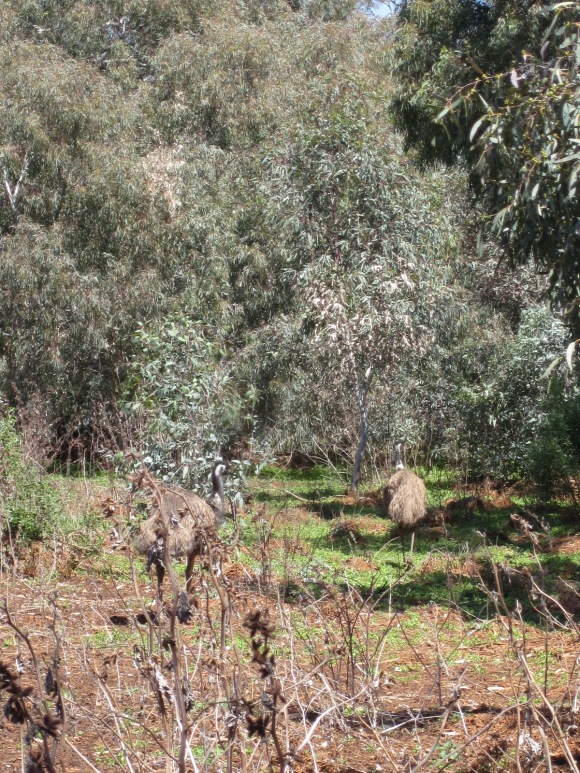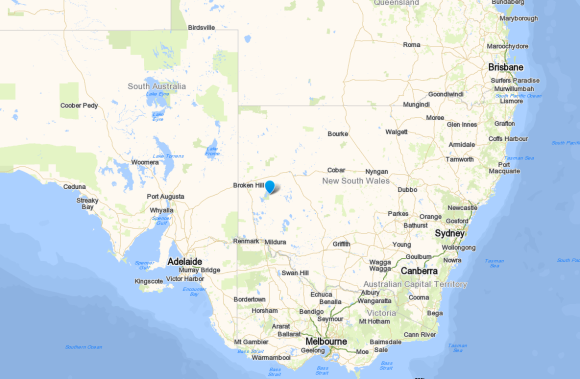Even though I have travelled up to Menindee for five years now I am always surprised by the diversity in the environment.
As I have said a few times, you look out the car window and see a flat, dry, uninteresting landscape. Is it an arid area? I guess so, although Philip Moore says in the introduction to his invaluable book A guide to plants of Inland Australia
…arid and dry not only mean parched but have connotations of uninteresting, dull, barren, unproductive and lacking spiritual or creative life. Those are not the feelings engendered in most Australians who, according to surveys, describe our natural and wilderness areas as happy, friendly, sacred, huge, roadless, pure, remote, alive, exciting, unique, wild, challenging, inspiring, valuable, restful, free and unspoilt. [p12]
Wow, that is some list of positives. He goes on to say
While we acknowledge that these are perhaps rose-tinted views from the workplace and the city gridlock, they nevertheless do reflect our regard for that large inland portion of sparsely inhabited and starkly beautiful country we affectionately call the outback.
That notion of the Outback is a curious one too. Something I read, and I think it was in Alex Miller’s Autumn Laing, made me stop and think. When a character, who lived in remote Queensland was asked where the Outback was, he said that it was further out. Many would consider his station in the Outback, but for him it was home and the Outback was further on.
I understand that. Before I went to Broken Hill and Menindee the Outback was much of inland Australia. Having explored the fringes of the Inland, including the Flinders Ranges, I tend to think of the Outback as the land further over, over the distant horizon. It’s the area that is unfamiliar, undiscovered and unexplored by me. The Outback has become a concept rather than an actual place. What do you think? And I wonder what those who live in these remote places think.
However it is far from being a dry, barren environment. You only have to walk a little way into the landscape to see the diversity.
Every plant is doing what it can to survive and reproduce. You see the plants that flourish when the season is right for them, the plants that creep or climb on others, that put on a marvellous show like the poached egg daisy. You see the ones that shelter in the shade of the bigger plants or thrive out in the open. You notice that not every bush is a saltbush and that even the saltbushes have beauty and difference.
This is just a small gallery of species that grow there.
Then there are the animals — fortunately no snake photos! There are many species of birds that live along the banks of the Darling River. They move so quickly that often you only catch a flash of colour, so unfortunately photos are very difficult.
Look how well camouflaged this magnificent fellow is, as he strolls through Kinchega National Park.
And speaking of camouflage, can you see the animals in the photo?

































17 replies on “It’s surprising what lives there…..”
To each her own. For me, that landscape is just too stark and redolent of struggle and a little desperation, especially when I think of farmers trying to survive. My own favourite is the tangled and riotous jungle of the wet tropics, where you can stand utterly still and be surrounded by hundreds and hundreds of different species, all doing their thing and ignoring you completely!
LikeLike
It is a place of struggle and those areas of severe drought in Outback Queensland
LikeLike
Whoops, something went wrong there! What I meant to say was that the diversity would be compromised in areas affected by the severe drought in Outback Queensland. The tropics are magical places too, as you say, so lush.
LikeLike
It’s true, drought does sort the tough from the delicate: you only have to look at my brown lawn to see what copes and what still holds on… swathes of lush green grass are not natural, and the gnarly, awkward stuff is coping.
LikeLike
Wow… nice info and marvelous post… I do always looking forward for your posts… 🙂 Best wishes.
LikeLike
Aww, thank you. I like to write about things that I am really interested in. I think that is a key.
LikeLiked by 1 person
Hmm that makes me so happy too…:-)
LikeLike
Hi Anne
These are spectacular photos. I love your blog.
Just in case this comes in handy I thought I would pass it on. Yesterday I went to see an art journal exhibit at East Melbourne Library in George St. The library offers these glass cases for people to exhibit at no cost. I really enjoyed seeing original art this way. The link from the artist’s blog gives an idea of the factilities available –
http://www.alissaduke.com/2015/10/new-exhibition-of-my-sketchbooks.html
There maybe other community libraries around that offer this secure facility as well. When I studied for a writing certificate at Box Hill Tafe we created our own student project whereby we arranged for our Haiku pieces to be displayed in the glass cabinet in the library. Nice short little poems easy for people to read as they sauntered past. Small exhibits like this are a lovely way for people to experience creative pursuits by local artists and writers.
Sandi
LikeLiked by 1 person
Sandi, thank you so much for this info, and the link. It will be good to follow up. I love how art is being presented in so many different ways and different places now. And very clever to have the haiku poems in the boxes. They would be just the right length for people to read as they go by.
LikeLike
It is a very big, huge hint to you, and a dream of mine, to see some of your Menindee paintings, photos, processes of botanical art, in those cases so I can come along and greedily gaze on your work in real life.
LikeLike
I am so pleased that you would like to see them. One of the aims of the Project is to have an exhibition. We are at the beginning stages of working towards that, and I will let you know when it comes off.
LikeLike
Fabulous.
LikeLike
Amazing photos, Anne. And a thought provoking post about the ‘Outback’. As a city girl, I’ve always thought of the Outback as the untamed part of the land. So farming country isn’t the Outback, and maybe that’s why home, no matter how isolated or distant, can never be the Outback either. I hope we never lose ours. 🙂
LikeLike
Yes, I think you are right, that the Outback is not agricultural land, is untamed and unfamiliar. Home, wherever it is, is familiar and tame. And we certainly need those wilderness areas
LikeLike
I’m still mostly a city girl so I don’t know how I’d go in the real Outback, but I love the word, and I love the imagery that goes with it – laconic, understated, quietly dangerous, competent, egalitarian, and even modest but never humble, or tame.
It’s us, isn’t it?
-cough- And then there’s the reality stripped of all the romantic notions. 🙂
LikeLiked by 1 person
Even though I’m a native of the east coast I love and feel quite at home in the outback. It fascinates me… I love your pics and narrative. All flora and fauna interests and attracts me but existence of those of the outback seems more-so because it is seems hard won. I would be thrilled to encounter the birds and other wildlife you shared via your photos, and would have also been busy snapping pics of the flowers.
LikeLike
It is so different to any other of my experiences too. Going back so regularly has depended my appreciation of the environment too. However, it is not an area I would love to live in. I am drawn to the mountains and seas, so Flinders Island is more my ideal
LikeLike